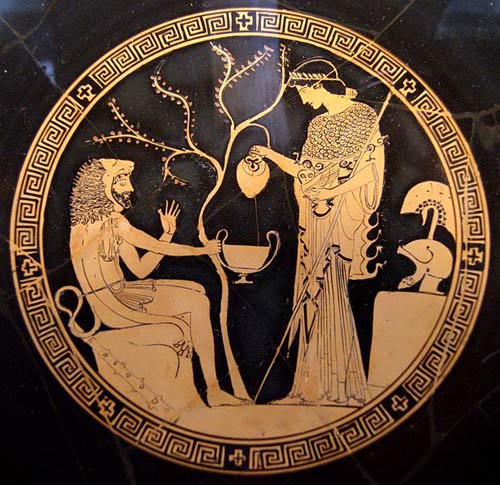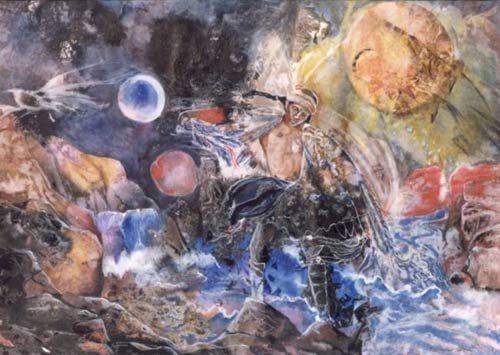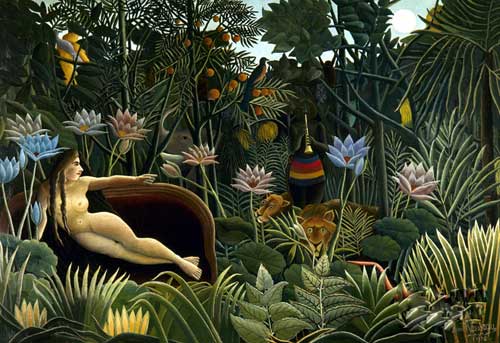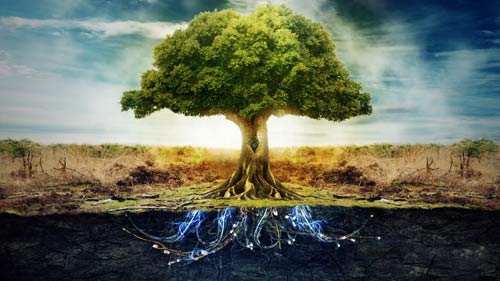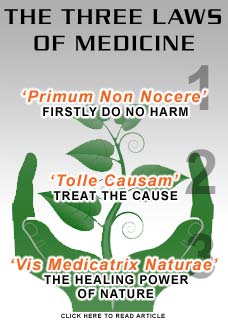
Our external lives have greatly changed in recent times but internally, biologically, we remain much the same as we have for many thousands of generations. One of our most important and enduring characteristics is our natural curiosity. We have always been interested in the world around us, and especially interested in each other! Long ago, people noticed fundamental differences between themselves that they described in various ways in different cultures but are commonly represented by words such as hotter, cooler, dryer & damper; the differences in these key qualities making up a person's nature, or their constitution. What follows is a brief personal account of my own journey into the origins of constitutional medicine and how and why I have made some modern adaptations to this most useful, ancient knowledge. |
|
||
| Our Pages ABOUT CONSTITUTIONAL MEDICINE
|
One period of history, that of the Ancient Greeks, was an extra-ordinary time of free thinking and fast advances - this era gave us democracy, trial by jury, theatre's comedy & tragedy, combat by games rather than war (the Olympics), and numerous revelations in mathematics, architecture, philosophy etc. In this time, the Greeks also developed and wrote about the humoral system whereby they divided humanity into four groups that they described as Sanguine, Choleric, Phlegmatic & Melancholic. Each one of these groups was understood to have different characteristics, tendencies and temperaments and each was understood to have foods and medicines that would suit one type better than another.
I found this ancient knowledge remarkably useful to work with, but I grew to see a fault in it that was too serious to be ignored. Initially it showed itself in the very negative connotations to the word 'Melancholic' and the somewhat negative connotations to the words 'Choleric' & 'Phlegmatic'. As I delved more deeply, I saw that the Greeks view of the constitutions was being distorted by prejudice and inequality. As much as it truly was an age of enlightenment, the culture of the Ancient Greeks was still entrenched in hierarchical thinking. Their world-view was one that could endorse slavery and see women as inferior beings who, like anyone else without land and wealth, had no say in their society, no right to vote. Hierarchical thinking permeated their view of the constitutions too. Sanguines were emphatically placed at the top, followed by cholerics, phlegmatics and then the melancholics. 2500 years later, growing up in New Zealand, the first country in the world to give women the vote, this old way of seeing things did not sit at all well with me, equally disturbing was how it didn't reflect my own observations from daily life in a busy health practice. Because It did not seem to matter if a person was hotter, cooler, dryer or damper, it was what people did with their inherent nature that determined their levels of health and happiness, not which constitution they belonged to. In other words, it was not better or worse to be cooler or hotter, dryer or damper, it was simply different. Things came to a kind of crisis point one day when, especially with as loaded a word as 'melancholic', I realised I could not keep using the old terminology without breaking the first rule of 'do no harm'. But If I was to drop the old names, then what would I replace them with?
The herbal tradition I first studied was called 'Physiomedicalism'. This is based on two great traditions, the old European ways along with the lore and practice of the medicine of the Native Americans. Tribal medicine in particular has reverence for ways of relating to the primal forces of Nature through animal totems and so, many summers ago, I went on a personal ''vision-quest' to seek inspiration for the right symbols to represent these old names and ideas in a way that would not do harm by reinforcing outmoded stereotypes but would instead help people to understand the strengths and vulnerabilities of their constitutional nature with an open mind. This began an extraordinary process whereby, over a number of days, one at a time, the new totems came to me in a way that is hard to describe but was wonderful to experience. First came the Tiger for people who were comparatively hotter and damper, then the Bear for people who were cooler and damper, then the Eagle for those who were hotter and dryer then finally, as marvellously clearly as the others, the enigmatic Elephant/Butterfly for those who were cooler and dryer. As each totem came into my mind as if placed there by some mysterious intelligence, it bought many realisations flooding in at the same time. All the experiences I'd gathered from working closely with thousands of patients suddenly took a cohesive shape that filled me with realisations and new understandings. Many of these are shared in other parts of this living book, the work on the individual constitutions, the cycle of healing, the chapter on emotional healing... I should mention that the experienced reader who is looking for an exact cross-over from the old names to these new symbols will find themselves slightly out of kilter in a 'square peg to a round-hole' kind of way. There are some subtle but vital differences to adjust to in the analysis. They are changes that require a non-hierarchical, open mind to understand because best of all I saw, with great joy, how we truly are not better or worse than one another, not at all, -- we are simply different. These innate qualities of heat, damp, dryness and coolness are all utterly vital, and we all must have them to varying degrees in any case, because each provide their own essential elements to the life force that animates us all.
I am what you could call a Western herbalist and there are two other main types of herbalists in the world, namely Chinese (TCM) and Indian (Ayurvedic) practitioners. Soon after I started practice in Christchurch in the late 1980s it struck me rather hard that, when I looked at these two great systems, that they retained an extraordinary wealth of tradition and philosophy that underpinned their work whereas my own system, by contrast, could be seen to be largely ignoring its own ancestral roots in favour of embracing a more modern, 'scientifically acceptable' approach. I could see then, and still do now, that there is great strength and vigour in the new world of evidence- based medicine but, at the same time, it has a reductionist approach to understanding people that can lack much necessary depth when it comes to that most remarkably multi-layered thing - a human being! You simply cannot reduce a person to their problems alone. As tempting as it may be to give someone a label, and then simply focus on that, the truth is that whatever problems are happening are always part of a complex 'soup' that includes such things as nutrition, environment, work, relationships, outlook on life, feelings about themselves, their family, their culture... in other words everything! Conventional medicine focuses on the illness and gives drugs to reduce its symptoms and sometimes this is entirely appropriate, especially when the suffering is overwhelming, however for many people, especially if they have been unwell for a long time, focusing on the illness in the way of 'how to get rid of it?' can just end up making it stronger because you must treat the cause of a chronic problem for it to be resolved. I was personally compelled to dig up the old roots of my herbal traditions because they gave me a practical method and language to not just get caught in trying to find the nearest exit from the overwhelming urgency of the symptoms but rather to keep seeing and working with the whole person. The old ways of healing are still right about many things, including that you firstly must understand who a person is and where they have come from before you can help them find their way ahead. This approach gives the self-healing intelligence inside us the best kind of support to overcome our troubles. In any case, history, philosophy and ideals aside, all that frankly matters to me in my day to day work is getting great results. In that respect, I have found the constitutional approach, putting people first, to be nothing short of transformative. It works, so I keep using it, and want to share it too...
____________________________ ~ Elephant/Butterfly: Cooler & Dryer ~ Back to Constitutional Medicine Introduction |
|
|
|
© 2011 R.J.Whelan Ltd
